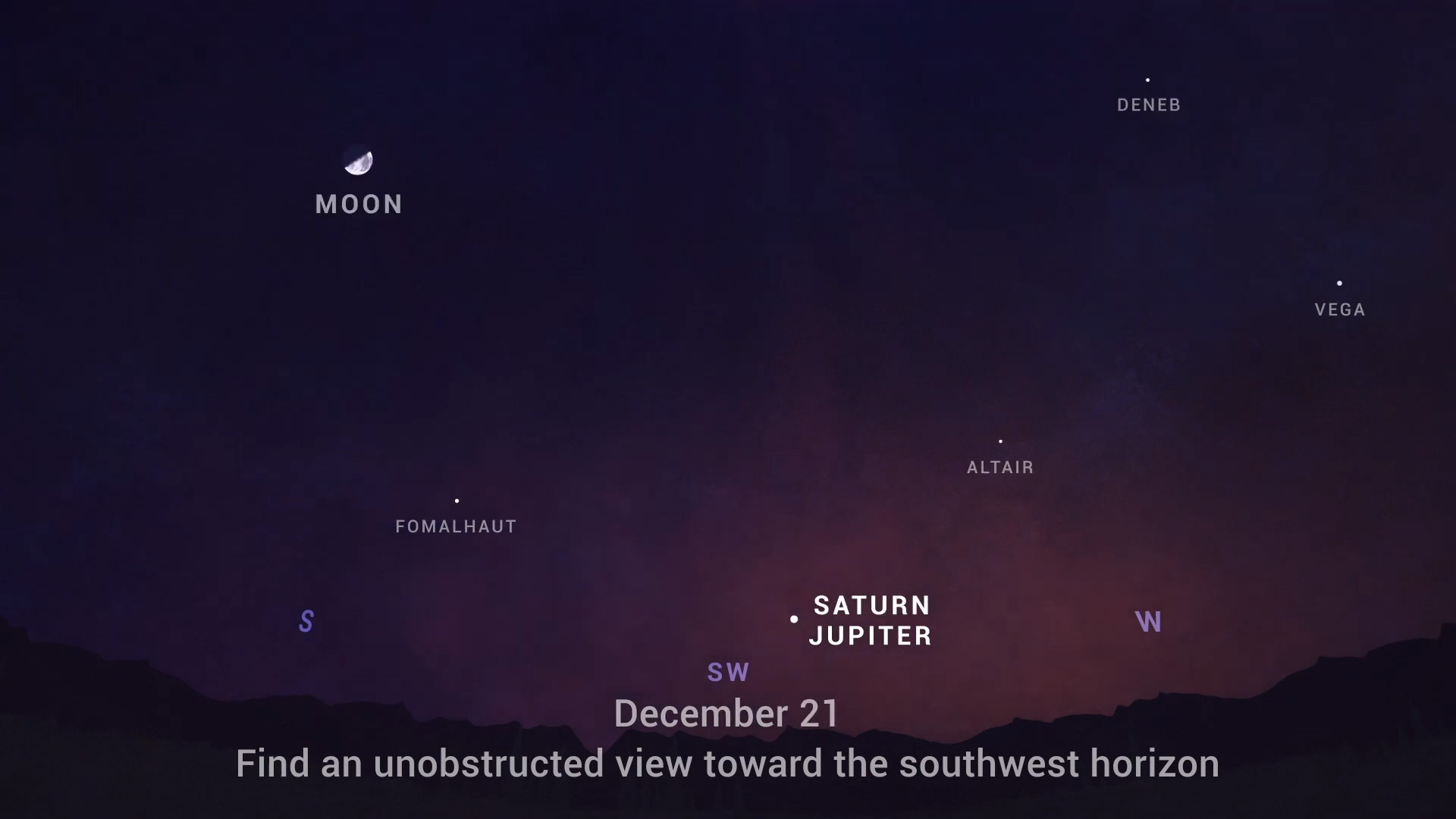'Great Conjunction' 2020: NASA tips to see Jupiter and Saturn shine as a 'Christmas Star'
Jupiter and Saturn will align in the night sky on Dec. 21 in an event astronomers call the "great conjunction" — also referred to as the "Christmas Star" — marking the planets' closest encounter in nearly 400 years.
When Saturn and Jupiter converge on Dec. 21, the two planets may appear as a bright point of light that will be easily visible in the night sky. The two planets have slowly been moving closer to each other over the past few weeks.
A conjunction occurs when planets appear incredibly close to one another in the sky because they line up with Earth in their respective orbits.
"You can imagine the solar system to be a racetrack, with each of the planets as a runner in their own lane and the Earth toward the center of the stadium," Henry Throop, an astronomer in NASA's Planetary Science Division, said in a NASA statement. "From our vantage point, we'll be able to see Jupiter on the inside lane, approaching Saturn all month and finally overtaking it on December 21."
Related: Get ready for the 'Great Conjunction' of Jupiter and Saturn
A rare alignment
While Saturn and Jupiter's orbits bring the planets into alignment once every 20 years or so, this year marks the first time since 1623 that the two gas giants have passed this close to one another.
This year's great conjunction also marks the first time in nearly 800 years since the planets aligned at night and skywatchers were able to witness the event. (The 1623 conjunction wasn't visible to skywatchers on much of the Earth because of its location in the night sky, so the last time the event was visible was in 1226.)
Breaking space news, the latest updates on rocket launches, skywatching events and more!
The planets will be closest to each other in the sky on Dec. 21, appearing only a tenth of a degree apart. They will remain in close alignment for a few days and will be easily visible to the naked eye when looking toward the southwest just after sunset. While the two planets may be viewed as one point of light, they will remain hundreds of millions of miles apart in space, according to the statement from NASA.
Coincidently, this year's great conjunction also falls on the first day of winter in the Northern Hemisphere. As a result, some have referred to the planetary alignment as forming a "Christmas star," in reference to the Star of Bethlehem, given the event falls only a few days before Christmas.
"Conjunctions like this could happen on any day of the year, depending on where the planets are in their orbits," Throop said in the statement. "The date of the conjunction is determined by the positions of Jupiter, Saturn and the Earth in their paths around the sun, while the date of the solstice is determined by the tilt of Earth's axis.
The solstice is the longest night of the year, so this rare coincidence will give people a great chance to go outside and see the solar system."
How to see it
To view the astronomical event, skywatchers should point their gaze toward an unobstructed part of the southwestern sky, about an hour after sunset since the planets will set below the horizon quickly.
Leading up to the Dec. 21 conjunction, Saturn will appear slightly above and to the left of Jupiter. Then, the planets will reverse positions in the sky, NASA officials said in the statement.
Jupiter and Saturn are bright, so they can be seen in areas with clear skies and no cloud cover — and even from most cities. This also means that the event can be seen with the naked eye. However, binoculars or a small telescope may allow viewers to see Jupiter's four large moons, according to the statement.
Editor's note: If you capture an amazing view of the Great Conjunction of Dec. 21 and would like to share it with Space.com for a story or gallery, send images and comments in to spacephotos@space.com.
Follow Samantha Mathewson @Sam_Ashley13. Follow us on Twitter @Spacedotcom and on Facebook.

Samantha Mathewson joined Space.com as an intern in the summer of 2016. She received a B.A. in Journalism and Environmental Science at the University of New Haven, in Connecticut. Previously, her work has been published in Nature World News. When not writing or reading about science, Samantha enjoys traveling to new places and taking photos! You can follow her on Twitter @Sam_Ashley13.

